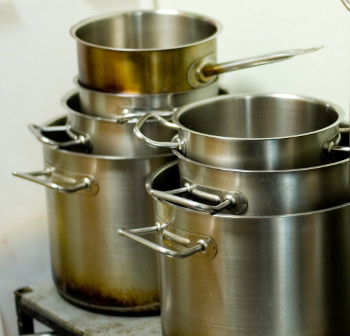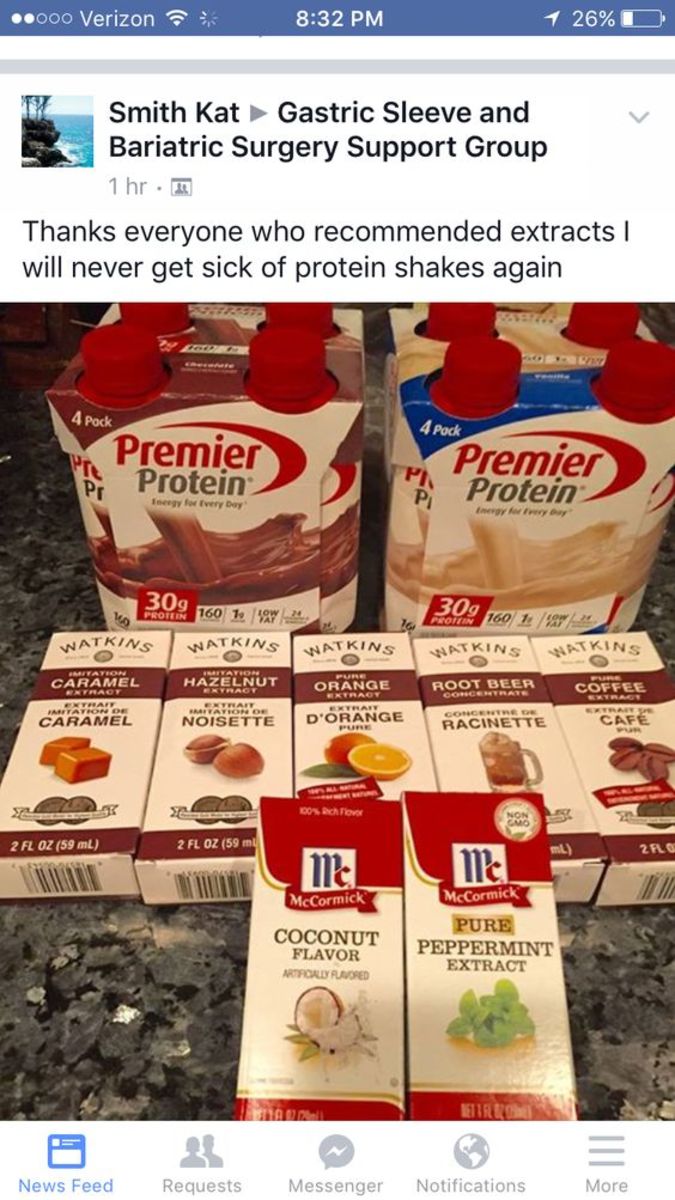How to Make a Roux - Written by a Real Cajun

My Cajun Heritage and a Roux Recipe
I grew up in a Cajun household the oldest of six. I knew my Cajun grandmother, the one that taught my Irish mother to make roux, gumbo and what my grandmother called stew. She also taught us to make homemade mayonnaise, but that's a topic for another day.
BTW "Stew" is a roux based chicken dish that could easily be turned into gumbo. It does not have the soupy consistency of gumbo but instead uses the roux as a gravy. The chicken is cooked in the roux/gravy and served with the same fixings as gumbo--rice, potato salad and french bread. My Irish mother added vegetables--God Bless Her!
My Adventures with Roux
The tradition is to pass down roux making by learning from the generation before. Every child in my family took his or her turn standing over the stove turning the roux around and around in the cast iron skillet making sure it didn't burn.
But first, we would watch my mom or grandmother heat the oil and add some flour, stir the flour into the oil and add more flour. Then we would take over once the perfect balance of oil and flour was created--Cajuns have such large families because there is so much roux to be stirred!
Eventually my mom or grandmother would add liquid to the roux and create the gravy, place the onion, bell pepper and the chicken into the roux--the liquid cooks the chicken. Then they would let it simmer for an hour or so allowing the flavors to blend.
I would watch and follow directions but when it came my turn to actually make the roux I just never "got" the process. I would try to get the consistency of flour and oil right but would end up with a mess that I would have to dump or a roux so light in color any self respecting Cajun would have laughed me out of the kitchen.
Problem Solved - Roux is Really Easy to Make
The problem I had was that grandmother never used a measuring cup. She would pour the oil straight from the bottle. I also saw her scoop her oil from her grease can when she was cooking in her own kitchen--she would save her grease after cooking instead of throwing it out and place it into a lidded jar that sat on the counter near the stove. All the flavors the grease held would be released into the dish she used the grease in.
She would start with a tablespoon of oil and then shake a small amount of flour into the pan. She would stir the flour into the oil and then shake a bit more flour in and repeat the process. What she was doing was filling the oil with the flour until the oil's capacity to absorb the flour had been reached. But she was doing it without measuring and although there are many things I can "wing" and have a "feel" for in cooking, this process always baffled me.
THE ANSWER
That is, until I stumbled upon a way to measure the process, premix the roux and then pour it into the pan to brown.
In fact, I got rid of the cast iron skillet too. It may not sound authentic but trust me the right consistency and flavor is there and in the end that's what people remember.
I Passed My Roux Making Test!
Flash forward about thirty years. My Cajun grandparents are long gone from this world and my family is visiting my brother in central Texas. It's the Fourth of July and I am finally making gumbo for my whole family for the first time.
A family my brother is housing a sick horse for pulls up unannounced and ends up joining us for gumbo (that's what gumbo is for, right?) They have been away from home for over a month and have been eating in restaurants. The father has been hired by a local company and because they are already settled elsewhere he just brought the whole family and their animals until he figured it all out. AND they are Cajun!
I learned more about roux that day, the crazy variety of ways it can be made and the equally crazy ways it is served than I ever did from my own family. They praised the roux, the cook and the gumbo and I swear I could hear my Cajun grandmother whispering in my ear "Elle est partie!".
I'd just passed the biggest test of a Cajun roux maker-a taste test conducted by an unrelated Cajun family! Oh, wait...I forgot, all Cajuns are related... somehow. LOL, it was still a great day!
Easy ROUX Recipe
So here's the roux recipe that saved my Cajun a**.
The amounts used in this recipe are for a gumbo sized dish (a 2 gallon stock pot sized gumbo!). If you wish to make something smaller, then halve or quarter the amount of ingredients.
Also, you need to have a stock to mix with the roux after it is browned.
This recipe is designed for a stock that starts out at 2 gallons and boils down to about 1 and a half gallons. I simply place a whole chicken or a selection of 8 chicken pieces (don't forget to remove the bits the butcher puts inside the chicken cavity) into a stock pot with 2 gallons of fresh water, some salt and a couple of bay leaves and allow the chicken to cook down until it falls off the bone. (Make sure you scoop out and get rid of the frothy, icky stuff that rises to the top of the stock as the chicken cooks. It's nasty and will ruin your cooking.)
Remove the cooked chicken and set it aside and use the remaining liquid as your stock.
Start the roux with the following tools:
- 16 ounce measuring cup
- whisk or metal fork
- skillet
- roux paddle
- rubber spatula
Use these ingredients:
- 1 cup of vegetable oil ( I use canola but if you keep your cooking fat you can use that instead)
- 1 cup+ of all-purpose flour
THE RECIPE
- Place the 16 ounce measuring cup on the counter in front of you and fill the first 8 ounces (1 cup) with all of the vegetable oil.
- Stir in a couple of tablespoons of the flour using the whisk or a fork.
- Once the flour is blended, add more flour and stir it in.
- Repeat the process until the total mixture tops out at 2 cups/16 ounces. FYI You will use more than 1 cup of flour because the flour gets absorbed and blended into the oil-hence the way the flour is listed in the ingredients as 1 cup+.
NOTE: If you wish to make the roux in a smaller batch, start with a 1:1 mixture plus a little more flour. So a roux made with 2 tablespoons (one eighth of a cup) of oil would need 2 tablespoons of flour plus a little more. The mixture would need to be a total of 4 tablespoons which is equal to one quarter cup.
You are now looking at your roux mixture.
Always Use a Roux Paddle
I like the wooden paddles for stirring roux, they don't ruin the finish on the pan. They also seem to carry a certain level of flavor that a metal or plastic paddle cannot.
You can also use a spoon to stir roux. However, the paddles are designed to push a wide expanse of roux away from the hot surface of the pan.
Brown the Roux
Heat your skillet to a medium-high temperature. Scrape the roux out of the measuring cup and into the hot pan by using a rubber spatula (the rubber spatula will get more of the roux out of the cup than any other tool.)
The roux will sizzle a bit when it enters the pan-remember it has a lot of oil in it and placing anything that has water or a liquid into it will cause it to hiss and possibly splatter.
Begin to scrape the roux away from the surface of the pan as it browns-this keeps the mixture from burning. This process can last up to a half hour or more, depending upon how dark you want your roux. And, you will soon learn why Cajuns have large families. Once you have learned to do this, you too will want to "con" a naïve person into doing it for you!
The final product should be crumbly and dark brown. As the roux is turned and browned its color and texture will change. It will go from a light liquid to a medium brown, firm, almost pancake like mixture to crumbly and dark.
ROUX MAKING TIP
If you need a visual color to match it up with, try using a bar of dark chocolate (NOT milk chocolate). Also, use your nose to decipher whether the roux is burning. Combine the look and smell to memory because this is what you want every time. Good roux comes very close to being burned, however, burned roux is a ruined roux. It smells nasty and tastes even worse!
Placing the Roux Into the Stock
This requires some level of personal protection. Remember I talked earlier about the roux hissing and splattering when it comes into contact with liquid? Imagine for a moment if you dumped the complete roux mixture into your stock. Yes, the results could be harmful to you and to anyone standing close by.
Use the lid for the stock pot as a shield and wear an oven mit on the hand that will be spooning the roux into the stock. Trust me you will be glad you did, otherwise you could end up with some nasty burns.
Spoon the roux into the stock but don't just dump it in. Place the spoon into the stock. This allows the roux to melt into the stock and keeps the amount of spattering and lost roux to a minimum. You can use the paddle to spoon it in or you can dirty up a large cooking spoon, whatever makes you the most comfortable.
Boil the stock and roux together for an hour. Then add your vegetables and seasoning, your chicken (the meat should be removed from the bone), sausage and anything else you want to add and simmer it.






